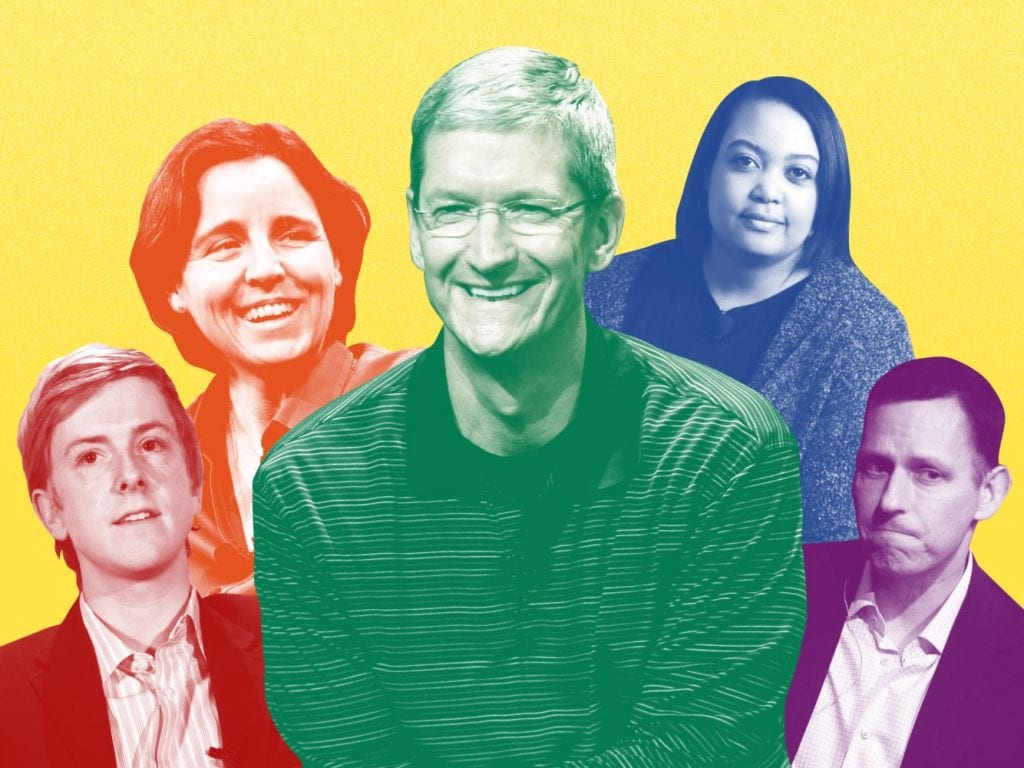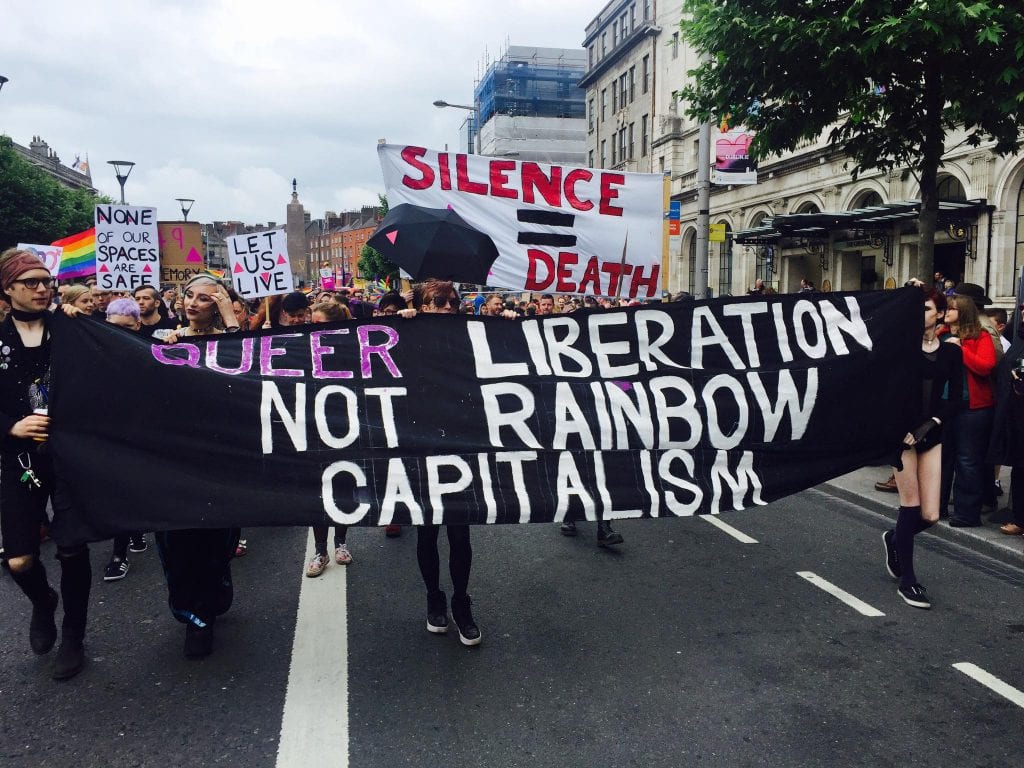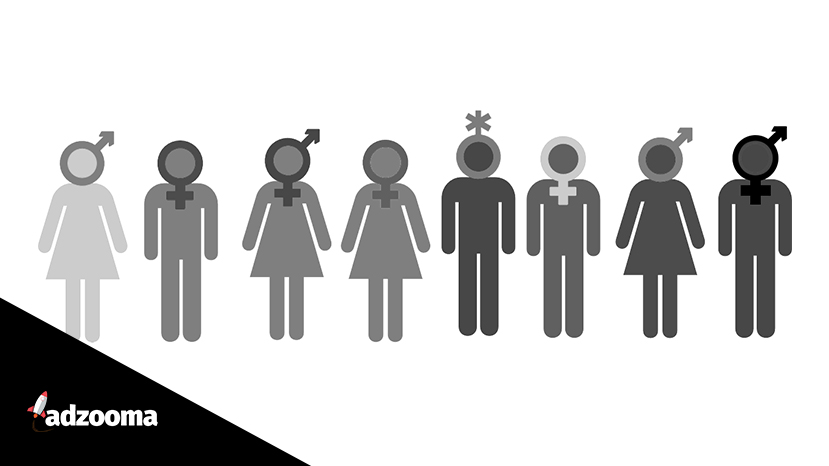The power of influencers is undeniable. Like them or not, influencers are inspiring the next generation’s decisions about what they’d like their lives to look like; a study by the Lego Group in 2019 found that 30% of children would like to be YouTubers when they are older.
Their unique power comes from their position as both role models and marketing tools – they tell us what to do and buy, and we as viewers look up to them.
It’s for this reason that influencers are “viewed as more credible and accessible” even than celebrities, according to Stephanie Sebala. When having a social media following can make you the recognised face of an industry, we have to start asking questions about the faces we see, and how they reflect on the industry they work in.
“Techbros”
Tech is widely thought of as having a “bro culture” and thus an “image problem” that essentially ensures most of the faces we see in tech specifically are of cis, straight white men. This has led to 30% of LGBTQ+ young people saying they would not consider a career in STEM, out of fear of homophobia or transphobia.
A number of organisations have been working to address this; notably Lesbians Who Tech and StartOut. Lesbians Who Tech state that their mission is “to be more visible to each other” and “to be more visible to others”.
It’s very clear that visibility in the industry is vital to the wellbeing and success of the queer community, and to broadening the appeal of the industry to young queer people.
It’s no surprise though that with a dearth of queer workers in tech, the most popular influencers in tech are overwhelmingly (to our knowledge) cis and straight – Linus Tech Tips, Marques Brownlee, Unboxing Therapy, and many more.
None are publicly queer. All the while the faces of an industry look one certain way, the audience they appeal to will largely reflect that, and so will the people they inspire to follow in their footsteps.
So where are the queer influencers in tech?

Most influencers or ‘content creators’ use YouTube or Instagram as their primary platform; I found the most out, queer content creators on Tiktok or Twitter.
Tiktok seemed to be popular because it has a thriving young and queer community, while Twitter seemed popular with slightly older content creators, as a platform that allows back-and-forth discussion.
On YouTube I only came across a handful of queer creators with some link to tech:
- ASAP Science, a gay couple who make informative videos about science and technology; Jake Wright, a gay computer science student
- Big Clive who has 640K subscribers on “the trashiest electronic channel on YouTube”
- Popular gay vloggers Rose and Rosie on their ‘Let’s Play Games’ channel (their third YouTube channel, and started years after their success on their original channel which focuses on comedy and their relationship)
Of those, only the two couple’s channels are visibly queer. By contrast, on Tiktok I was able to more easily find young queer people talking about tech by searching relevant hashtags. Most of them make a mixture of content, usually either informative videos about the processes of their craft or comedic ones about being queer (in tech, or in general).
Fern (@queerbots), a “genderqueer robotics engineer” makes a series called ‘Lesbian Tech Skills 101’ which is a lighthearted but educational way of teaching useful skills to the audience, such as checking the air pressure in a tyre or sharpening a knife. They have also noted that Tiktok has “shadowbanned” their content for allegedly violating community guidelines.
Another user called Rey (@rey.nbows) makes Tiktoks about the “dark web” and is open about being queer, but receives comments from followers asking them to stay out of politics when they’ve spoken about Pride or the Black Lives Matter movement.
I spoke to Eleonora, a 21 year old physics and mathematics student “with a passion for coding and machine learning”. She’s @Elle.PY on Tiktok where she makes memes for other queer people in STEM, and says she hopes to be a role model:
“As a LGBTQ+ I’d like to show my ordinary life and inspire others to pursue the same career I did. I want people to watch my videos and think ‘if she can, so can I’.”
For her, finding a community of people she could relate to has been crucial to her continued enthusiasm for tech – she runs a Swedish Discord server for girls and non-binary people in tech, which she feels is the “safest” space she has, alongside her Tiktok community.
When I asked Eleonora what she thought about popular tech influencers, she felt they could do more. She suggested that they invite smaller LGBTQ+ creators onto their channels or platforms, and share resources that help “make LGBTQ+ youths feel welcome in STEM”.
The queer people in tech that I found on Twitter tended to be more vocal about their identity and about politics than Tiktok users, who tended more toward humour. I came across Lynn (@lynncyrin) and Tatiana (@TatianaTMac) who both note their queerness in their bios and speak openly about racial justice in most of their recent tweets.
Once I found them, it was easy to discover other queer techies who they followed, and then relevant community networks like Queer Code Scotland. It takes some digging, but the queer tech community (and people with reasonably large followings too) is there to be found; it’s just not as visible as typical influencers usually are.
“Stick to tech”
Part of the problem for queer influencers is the idea that their identities are inherently political. Popular tech influencers have largely stayed out of major political discussions, with a few key exceptions during the recent boom of the Black Lives Matter movement.
Linus Tech Tips tweeted several times about racism and announced a $20,000 donation to racial justice organisations. He has an audience of millions, so he has a powerful platform to advocate with; unsurprisingly, a number of replies to his tweets suggested that he ‘stick with tech’, ‘stick to computers’, ‘stay out’ and so on.
The comments he made we somewhat poorly worded encouragement of interracial dating, but the bulk of the outrage was about his choice to talk openly about race rather than the offence he caused with his clunky wording.
Tech YouTuber Marques Brownlee is one of few prominent black people in his area of YouTube, and he recently spoke to his audience of 11.6 million in a video called “Reflecting on the Color of My Skin”. He referred to instances of being told “stay in your lane, stick to tech” when wanting to be open about his experiences as a black person in a predominantly white industry.
In the video, Marques goes on to say that as much as he is “proud of it” – his success as a black man – that race could also get “weirdly in the way” and force him to question whether his success was legitimate or gained because of a need for diversity.
It’s not hard to imagine that queer people who succeed in tech face a similar dilemma – be open about how your identity has impacted your experience and risk losing subscribers for being too political? Or keep your queerness to yourself and appear ‘neutral’?
In the words of Bryan Hughes, a ‘queer techie’ interested in why queer people and tech might be at odds,
“Tech is never neutral. And the only way you can think that tech is neutral is if you live in a place of extreme privilege. Tech is a part of this world. It always has been. And it shapes this world in a way that no industry does in this day and age.”
The insistence on neutrality in tech silences queer people and BIPOC alike, under the misguided belief that it is possible to have a ‘neutral’ industry uninformed by the identities of the people working within it. This is just another barrier to queer people being visible and safe working in tech.
The forced invisibility of queer tech influencers

Queer influencers, both in tech and other industries, face the further challenges of forced invisibility and false visibility. Forced invisibility is caused by YouTube and Tiktok censoring queer content; influencers who speak about queer issues are punished by seeing their videos demonetised or even deleted, and on Tiktok becoming ‘shadowbanned’ for using words such as ‘bisexual’, ‘lgbtq’, and so on. False visibility is an idea highlighted by Bryan Hughes, mentioned in the previous paragraph – they argue that “rainbow capitalism” is at fault for making the tech industry appear more inclusive than it actually is.
“Rainbow capitalism” is a term that critiques the tokenistic use of queer people and queer imagery as a marketing technique. The problem is when an industry happily celebrates diverse images but still fails to hire and support queer people. Hughes claims “The tech industry is engaging in a queerspecific version of diversity theater by sponsoring events like the pride parade. They market to sell more products, and most are not doing anything to make the life better for queer people.”
If we take this as truth, then it would make sense that there are so few queer people in tech empowered enough to become a visible face of their industry; the conversations about diversity in tech may be more for show than they are truly impacting how inclusive the industry’s practices are.
There are even further reasons why queer people might not want the visibility that comes with being an influencer; Hughes talks about their experience of trying to make their industry more inclusive and how it is treated as an “extracurricular” activity, which resulted in them losing a promotion.
The pressures of queer intersectionality
There is a double burden on queer workers – as well as BIPOC (black and indigenous people of color) and women – to be activists as well as excel in their field, making it harder for them to succeed professionally. A straight, cis person – though they may face other disprivileges – probably doesn’t have to consider how their sexuality or gender identity could be a risk to their professional growth, or whether they need to dedicate time and energy to breaking down those barriers for themselves and others like them.
Then there’s the expectation that influencers should be role models – consider the push for Zoella to endorse Corbyn back in 2017 – is tough to bear when it ties so personally to an influencer’s identity. Any criticism they might then face for becoming an advocate is a criticism of their person.
In a paper on the perceptions of LGBTQ+ influencers, Sabala writes that LGBTQ+ people can “struggle to connect with the heterosexual audience” and that their “perceived credibility” impacts how “persuasive” they can be with their message.
Seeing as queer people are a minority, it’s possible that being openly queer could limit you to a smaller audience (though you could argue, a more genuine one). Being visible clearly poses a threat to reputation, and therefore to livelihood.
We know that homophobia and transphobia can be built into how social media platforms run, so being out can result in financial loss. LGBTQ+ YouTubers have spoken out repeatedly about how often they have found their videos demonetised. At its most extreme, undesired visibility can result in violence or loss of life.
In 2014, Dr. Essay Anne Vanderbilt was outed as a trans woman in an article on sports site Grantland about a new golf putter she had created. She was vocally against the article being made public, and killed herself before it was published on the site.
The article – which misgendered “Dr. V” throughout – was published despite her death. Though there was heated debate about the ethics of the article, no one involved in its publishing faced material consequences for their actions.
Capitalist queerphobia
There are plenty of queer people in tech who are ‘out’ to everyone in their lives and comfortable with their queer identity. But even without the fear of violence, there is still a prohibitive threat of the loss of money or reputation because homophobia and transphobia are still so ingrained within our society and our technology.
Perhaps ironically, cis het people do need us for their own financial gain; the Digital Marketing Institute explains that the gaming industry has proved that games sell better when people feel good about them: “By crafting a more inclusive, welcoming brand identity, you will attract more attention, and foster greater trust with people.”
What a shame it is that queer visibility can make money for those around us, and cost money for the queer people themselves.
Leanne Pittsford, founder of Lesbians Who Tech, said to a room of queer people in tech:
“You are all influencers”
Though they may not have the same budget or clout as the big tech influencers, there are young queer women on Tiktok who are coding and making memes about it; trans engineers on Twitter finding community spaces; gay couples on YouTube who are gaming and teaching us about science.
Perhaps they aren’t influencers in the traditional sense, but they’re having an impact on other queer people, on their own community, in small ways every day. That is more significant to young queer people surely, than seeing queer people in tech ads and sponsored videos.
These communities becoming slightly more accessible on social media is only going to help encourage more queer people into tech – the hidden problem that remains is how the tech industry treats those queer people when they get there.




